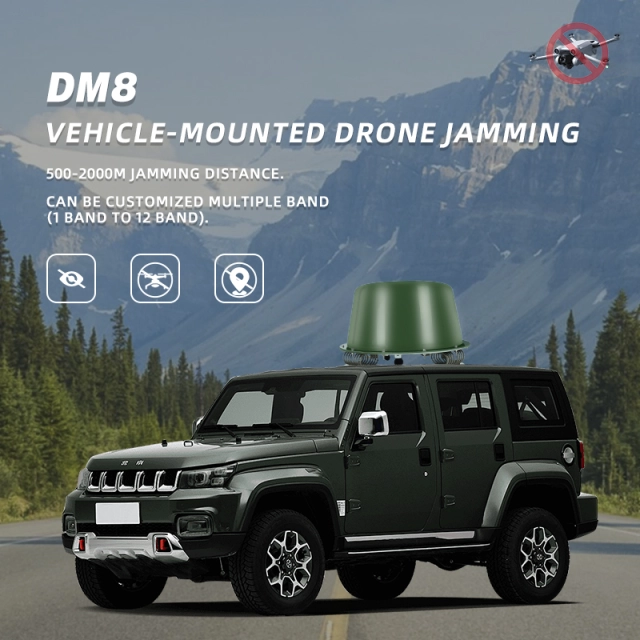Table of contents:
Integrating Vehicle FPV Jammers into Holistic Security Frameworks
The Role of AI and Machine Learning in Enhancing Anti Drone Jammer Efficiency
Collaborative Defense: Networking Multiple Anti Drone Jammers for Expanded Coverage
Analyzing Threat Patterns to Optimize Anti Drone Solution Deployment
Integrating Vehicle FPV Jammers into Holistic Security Frameworks
Vehicle-mounted First Person View (FPV) jammers represent a significant advancement in mobile anti drone technology. These systems, such as the 400W 8-band Vehicle FPV Jammer, offer a potent defense against unauthorized drone incursions. With an impressive output power of 400W across eight frequency bands, these jammers can effectively disrupt drone control and image transmission signals at distances up to 2000 meters. The integration of such devices into existing security frameworks provides a dynamic layer of protection, especially for moving targets like convoys or patrolling vehicles. As the demand for anti drone gun for sale options increases, these vehicle-mounted solutions offer a compelling alternative for those seeking mobile and powerful countermeasures.
The Role of AI and Machine Learning in Enhancing Anti Drone Jammer Efficiency
The incorporation of artificial intelligence and machine learning algorithms is revolutionizing the effectiveness of anti drone systems. These technologies enable jammers to adapt in real-time to evolving threat patterns, optimizing their jamming frequencies and power output for maximum efficiency. For instance, advanced anti drone gun for sale models now feature intelligent threat assessment capabilities, allowing them to prioritize targets and allocate resources accordingly. This synergy between AI and jammer technology not only enhances the overall effectiveness of anti drone measures but also reduces the risk of collateral interference with legitimate electronic devices in the vicinity.
Collaborative Defense: Networking Multiple Anti Drone Jammers for Expanded Coverage
To combat the increasing sophistication of drone swarms and coordinated UAV attacks, security professionals are adopting networked anti drone solutions. By linking multiple vehicle-mounted jammers, organizations can create a seamless protective umbrella over large areas or moving convoys. This collaborative approach leverages the strengths of individual units, such as the 360° vertical and 65° horizontal coverage offered by omni-directional antennas, to form an impenetrable defense network. As the market for anti drone gun for sale options expands, the ability to integrate these devices into larger, coordinated systems becomes a key consideration for buyers seeking comprehensive protection strategies.
Analyzing Threat Patterns to Optimize Anti Drone Solution Deployment
The effectiveness of anti drone measures hinges on the strategic deployment of countermeasure technologies. By analyzing historical threat data and emerging drone capabilities, security teams can optimize the placement and configuration of their anti drone systems. For example, understanding common attack vectors and drone flight patterns allows for the strategic positioning of vehicle-mounted jammers along vulnerable routes or around critical infrastructure. This data-driven approach ensures that resources are utilized efficiently and that coverage is maximized. As organizations evaluate anti drone gun for sale offerings, the ability to adapt deployment strategies based on evolving threat intelligence becomes a crucial factor in selection and implementation.
In conclusion, the landscape of anti drone technology is rapidly advancing, offering increasingly sophisticated solutions to combat the growing threat posed by unauthorized UAVs. Vehicle-mounted FPV jammers, enhanced by AI and machine learning, represent a formidable defense against drone incursions. The networking of multiple anti drone systems provides expanded coverage and resilience against coordinated attacks. As the market for anti drone gun for sale options continues to grow, organizations must consider not only the technical specifications of individual devices but also their ability to integrate into broader, data-driven security frameworks. By adopting a holistic approach that combines cutting-edge technology with strategic deployment and ongoing threat analysis, security professionals can stay ahead of evolving drone threats and ensure robust protection for their assets and personnel.

No comments:
Post a Comment